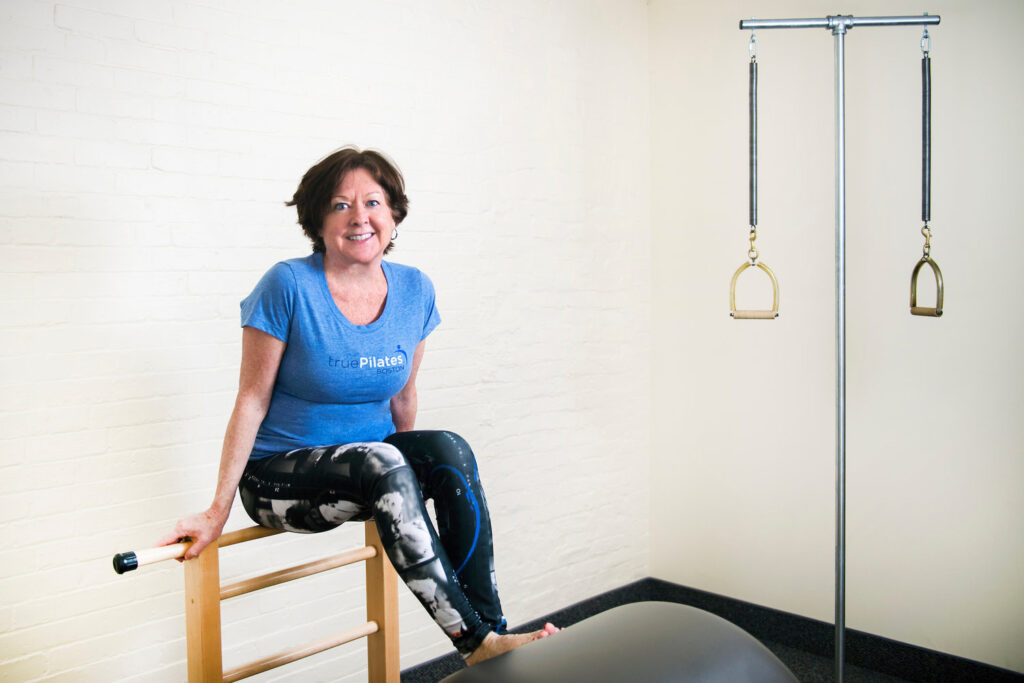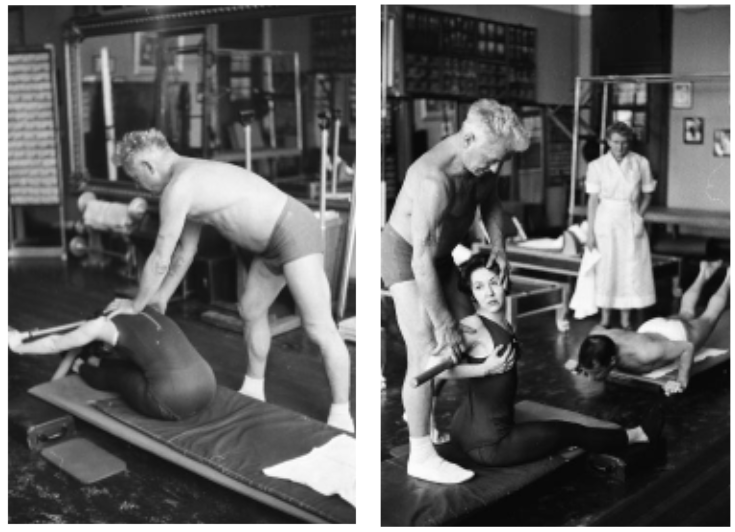Photo Credits: Herb Flatow, 1955
Copyright Mary Kelly, 2025 for the exclusive use of the Pilates Transparency Project
Issue #457
Wednesday, April 9, 2025
Is there value in looking at historical Pilates images?
by Mary Kelly
ABSOLUTELY!
A photo represents a slice of life – it captures an instant in time – a memory, an experience, or a piece of information about a time or place we’ve never been.
Joseph Pilates cared deeply about documenting his method and wanted to share his work far and wide. A view of the studio at 989 Eight Avenue shows walls full of photos. Joe was known to share images of himself – both in print and video – with friends and clients. Frankly, with anyone who might listen.
So why do these matter today?
A recent Pilates Intel contribution by Wendy LeBlanc-Arbuckle touched on how we might frame the “classical and contemporary” discussion based on “not a right/wrong approach, but how are we meeting the person where they are.” The same can be said regarding the value of looking at historical images. The goal isn’t to confirm or dismiss what we’ve learned in our certification programs or from experiences with clients. It’s simply to further our understanding of this great method.
Arguably, the greatest value is that photos make us feel something. Whether it’s Joe pushing a client, or being playful, or smoking a cigar, standing shirtless in front of a Christmas tree, or just flat out showing off – it gives us a glimpse into the persona of the man whose method we teach. We experience moments of recognition, moments of curiosity, moments of disbelief – but we feel something and this is something we can share – it is OUR history.
Looking at a single photo isn’t necessarily instructive, but there are many rich details such as: What are the spring or gear settings?; what about the original apparatus changed or stayed constant?; what was the demeanor of the studio?; when does Clara appear?; and so many more.
Joe was far ahead of his time, and there is still much to learn about his method and insights. Retaining and being able to share historical images and documents not only furthers our collective knowledge but can bring us together as a community of instructors and practitioners. Sadly, our ability to do so is being threatened. The Pilates trademark lawsuit in 2000 brought the community together and established the right to use the word “Pilates” to describe what we do. Now, the same person who falsely claimed to own the word “Pilates” is claiming copyright to many of the historical images. Same game, new decade.
As many readers of this newsletter are aware, there is a lawsuit currently dragging its way through U.S. Federal Court regarding this copyright dispute. In response to this lawsuit, the Pilates Transparency Project was created. Rather than recapping the lawsuit here, I’ll direct you to @pilatestransparencyproject on Instagram where further details and links to pertinent documents can be found. This October 2022 New York Times article: “The Fight For The Soul of Pilates” captures perfectly what is at stake here.
The Pilates Transparency Project is a fundraiser to cover the legal fees in the copyright lawsuit. This lawsuit should clarify which materials are in the public domain and which (if any) are not. A positive resolution will benefit our community and allow us to honor Joe. Litigation is an expensive and time-consuming process, but I feel strongly that this needs to be defended.

Mary is the owner of True Pilates Boston. Her goal is to provide a supportive and challenging environment that honors Joseph Pilates’ intent: “complete coordination of body, mind, and spirit.”
Mary is certified by Romana’s Pilates. She is a graduate of the comprehensive Pilates Professional Advanced Teacher Training Program – The Red Thread, as well as the Advanced Contrology Program through Authentic Pilates, The Pilates Studio Portugal. In 2024, she completed the Classical Syllabus, a program designed to apply the Pilates method to individual needs. She regularly attends workshops and conferences to further her appreciation and application of the method. She also holds a BA from Simmons College and an MBA from Boston University.
Madeline developed the Madeline Black Method™, a movement method that improves function and strength based on intelligent assessments, manual techniques, and exercise sequences that help people achieve their fullest movement potential. Her extensive study and widely respected accomplishments in the field of movement and fitness have fueled.

